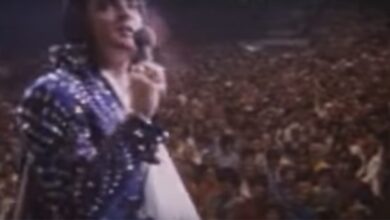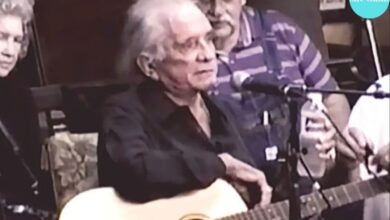This Dance Was A 1950s Sensation, Can You Recall It Today
In February 1958, American high school gyms and sock hops were electrified by the dance craze known as “The Stroll.” This line dance captured the essence of the rock ‘n’ roll era with its blend of carefree fun and youthful exuberance. Originating in African American communities, “The Stroll” gained widespread popularity thanks to television exposure, particularly through Dick Clark’s “American Bandstand.” Teenagers across the nation eagerly embraced the dance, integrating it into their social gatherings and community events.
“The Stroll” was more than just a dance trend; it was a reflection of the 1950s’ social dynamics and the burgeoning rock ‘n’ roll culture. The dance involved two lines of participants facing each other, creating a central aisle. Couples would strut down this aisle in rhythm with the music, adding their personal flair and style. This structure allowed for both group participation and individual expression, resonating with the youth as they sought to define their identities within a rapidly changing social landscape.
The soundtrack to this cultural phenomenon was “The Stroll” by The Diamonds, a Canadian vocal group renowned for their doo-wop sound and smooth harmonies. The song not only provided the rhythm for the dance but also helped cement the dance’s place in popular culture. With its catchy melody and infectious beat, The Diamonds’ version of “The Stroll” became synonymous with the dance itself. Dave Somerville, the group’s lead singer, with his rich baritone voice, became an emblem of the era’s musical and cultural vibrancy.
The widespread appeal of “The Stroll” was evident as it quickly became a fixture at dance events across the country. Its simplicity and fun nature made it accessible to everyone, transcending racial and social barriers in a time of significant segregation. Teenagers from various backgrounds found common ground on the dance floor, united by their enthusiasm for the latest trend. The dance became a symbol of youthful rebellion and communal joy, reflecting the optimism and dynamism of post-war America.
As “The Stroll” gained momentum, it influenced various aspects of popular culture. It appeared in films and television shows, further solidifying its status as a key element of the era’s youth culture. The dance’s influence persisted beyond the 1950s, leaving a lasting impact on how dance and music intertwined in American social life.
Overall, “The Stroll” encapsulated the spirit of the 1950s with its blend of simplicity, fun, and cultural significance. It represented a time when music and dance were central to the expression of youth culture, and its legacy continues to be celebrated as a symbol of an era defined by its energetic and optimistic approach to life.





